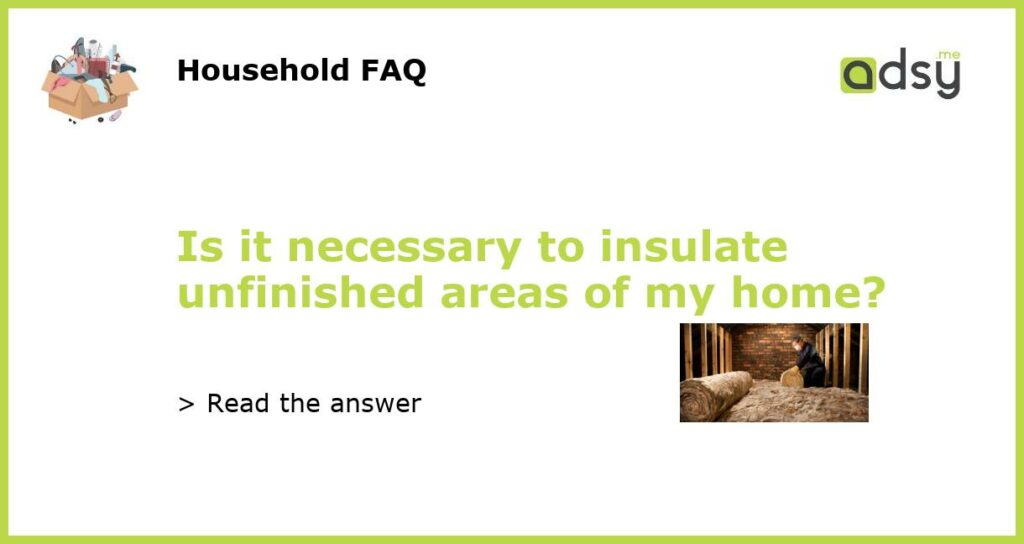Unfinished Areas of Your Home: To Insulate or Not to Insulate?
Insulating your home is an important step in maintaining a comfortable and energy-efficient living space. However, when it comes to unfinished areas of your home, such as basements, crawl spaces, and attics, the decision to insulate can be a bit more complex. In this article, we will explore whether it is necessary to insulate unfinished areas of your home and the factors to consider before making a decision.
The Benefits of Insulating Unfinished Areas
Insulating unfinished areas of your home can provide several benefits that make it worth considering. The most significant advantage is improved energy efficiency. Insulation helps to prevent heat transfer, keeping your home warmer in the winter and cooler in the summer. By insulating your unfinished areas, you create a barrier that reduces heat loss or gain through the walls and floors.
Another benefit of insulation is moisture control. Unfinished areas of your home, such as basements and crawl spaces, are particularly prone to moisture problems. Moisture can lead to mold, mildew, and structural damage. Insulating these areas can help in controlling humidity levels and prevent moisture-related issues.
Insulating unfinished areas can also enhance the comfort of your home. In colder climates, a well-insulated attic or basement can make these spaces more usable year-round. You won’t have to worry about drafts or cold spots, making it a more pleasant environment for work or storage.
When Insulation May Not Be Necessary
While insulating unfinished areas offers numerous benefits, there are circumstances where insulation may not be necessary or appropriate. One factor to consider is the climate where you live. In warmer climates, insulating your attic or unfinished basement may not be as critical as in colder regions. Additionally, if the space is used strictly for storage and not intended for frequent occupation, the need for insulation may be diminished.
Another consideration is the cost-benefit analysis. Insulation materials can be expensive, so it is important to weigh the potential energy savings against the upfront cost. If the unfinished area is small or not used frequently, the energy savings may not justify the expense of insulation.
If your home is relatively new and built to current energy efficiency standards, the unfinished areas may already be well-insulated. In this case, adding additional insulation may not provide significant benefits.
Consulting a Home Insulation Professional
When making a decision about insulating unfinished areas, it is wise to consult a professional insulation contractor or energy auditor. They can assess the specific conditions of your home and provide expert advice based on your climate, usage patterns, and budget.
A professional can conduct an energy audit to determine the areas of your home that would benefit most from insulation. They can also help you understand the different types of insulation available and recommend the best options for your specific needs.
While it may not always be necessary to insulate unfinished areas of your home, there are many reasons why it is beneficial to do so. Improved energy efficiency, moisture control, and enhanced comfort are just a few of the advantages. However, it is essential to consider factors such as climate, usage patterns, and cost before making a decision. Consulting a professional insulation contractor can help you make an informed choice and ensure that your home remains comfortable and energy-efficient.

